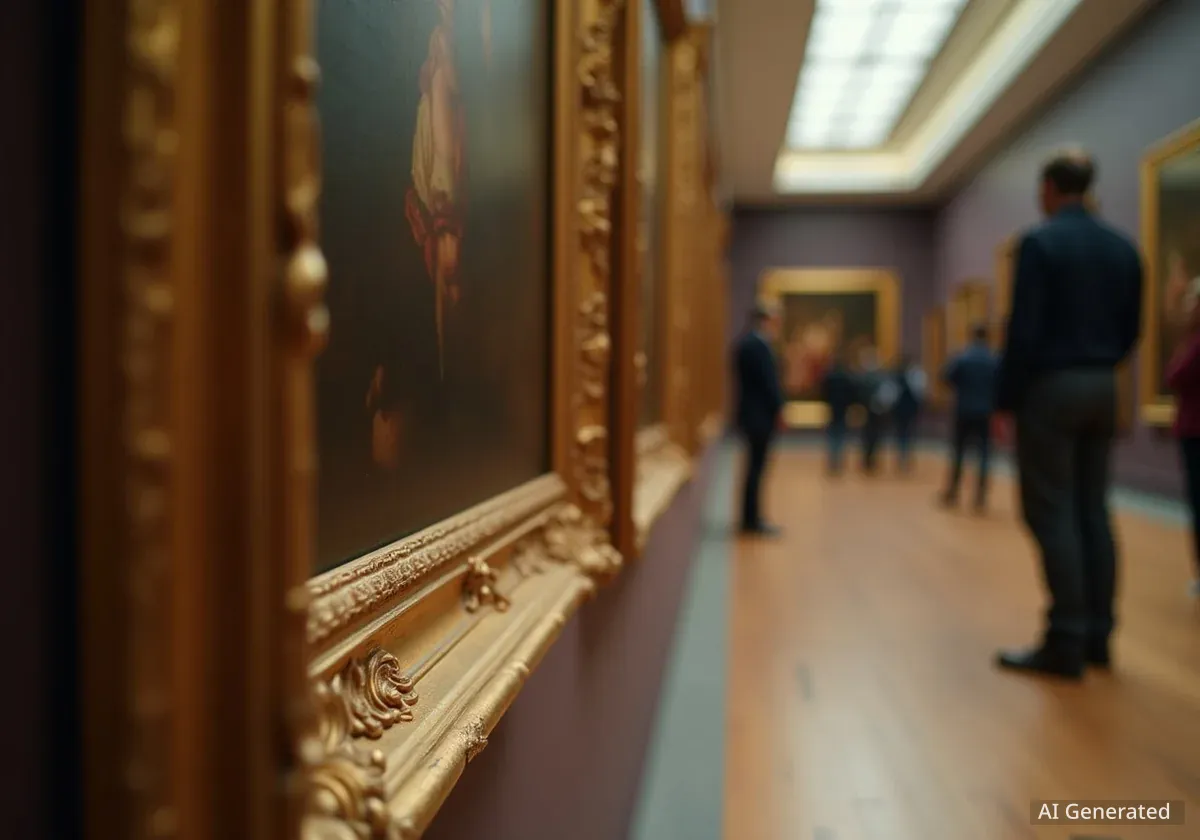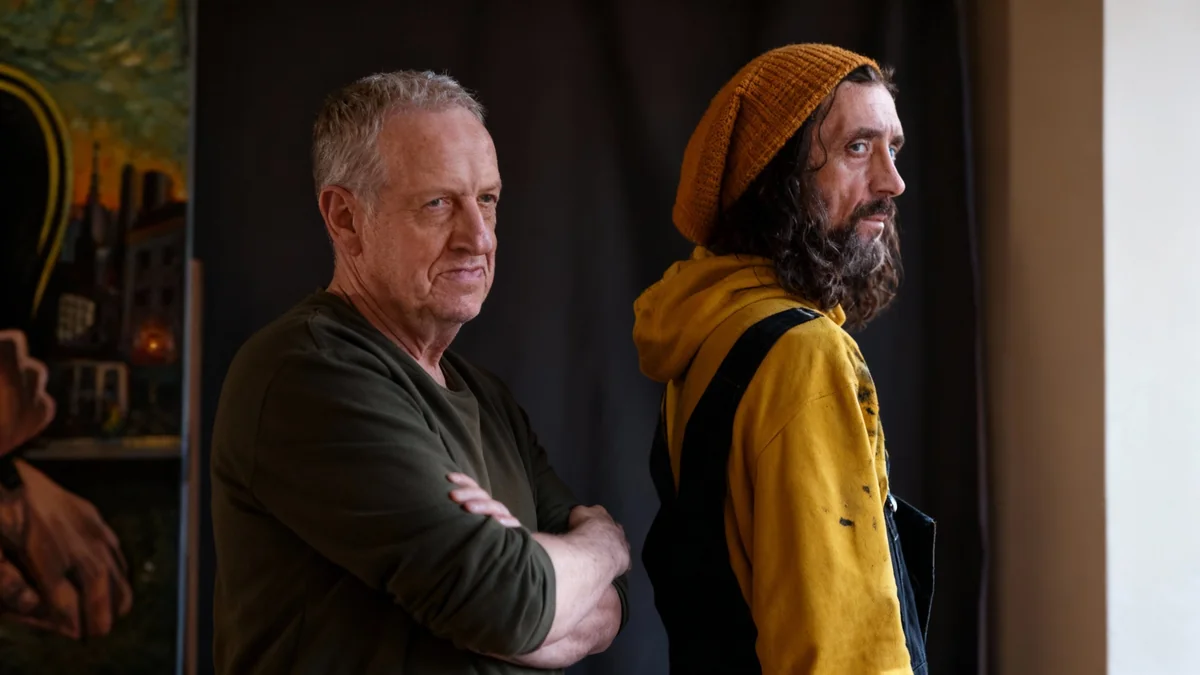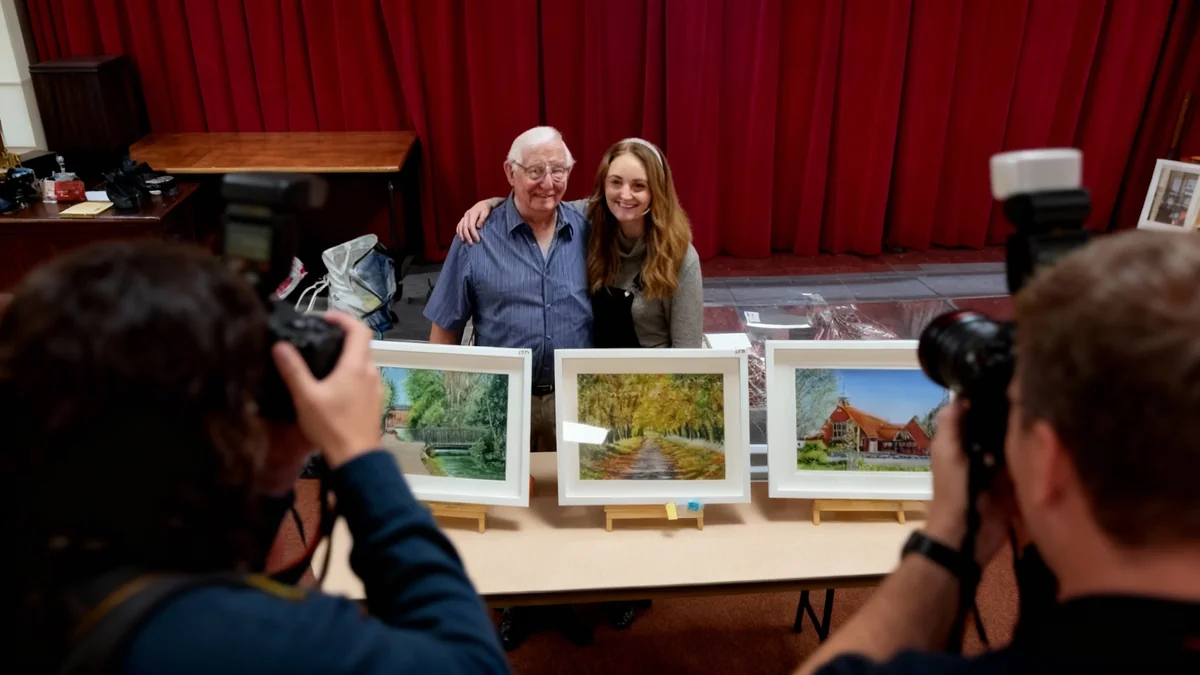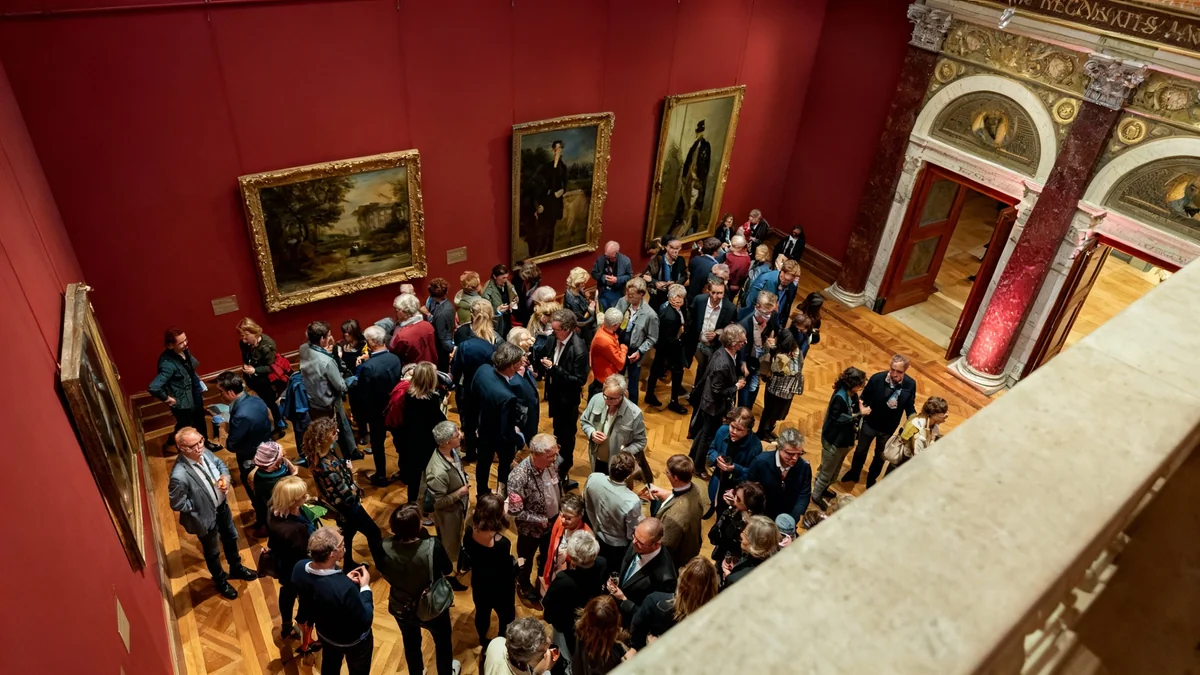A small Danish museum, the Nivaagaard Collection, has acquired Artemisia Gentileschi's masterpiece, Susanna and the Elders. This significant purchase places the Nivaagaard among leading institutions for pre-18th-century women's art, potentially holding more Renaissance and Baroque works by female artists than the Louvre.
Key Takeaways
- The Nivaagaard Collection acquired Artemisia Gentileschi's Susanna and the Elders.
- This acquisition significantly boosts the museum's collection of pre-18th-century female artists.
- The Nivaagaard now reportedly surpasses the Louvre in the number of early female artists displayed.
- The museum aims to rebalance art history by highlighting overlooked female painters.
Nivaagaard Secures Major Work
The Nivaagaard Collection, located in a coastal village north of Copenhagen, recently unveiled its new acquisition. The painting, Susanna and the Elders, is a notable work by Artemisia Gentileschi, a prominent Italian Baroque artist. Museum director Andrea Rygg Karberg successfully outbid numerous international galleries to secure the two-meter-high painting.
Ms. Karberg described the unveiling as "the happiest moment." This acquisition marks a significant achievement for the small Danish institution. It highlights the growing interest in works by female artists from the Renaissance and Baroque periods.
Artistic Significance
- Artist: Artemisia Gentileschi (1593-1656)
- Painting: Susanna and the Elders
- Period: Italian Baroque
- Subject: Biblical story of Susanna, who resists harassment by two judges.
Leading in Early Women's Art
With this purchase, the Nivaagaard Collection has positioned itself as a key museum for displaying art by pre-18th-century women. The Gentileschi painting now hangs alongside works by other notable female artists. These include Sofonisba Anguissola, a Renaissance artist who influenced Caravaggio, her sister Europa Anguissola, and the Flemish still-life painter Catharina Ykens II.
The Nivaagaard, a museum with only three main rooms and 261 paintings, now displays works by four women who lived before the 18th century. This number places it ahead of many larger institutions. According to its online catalogue, the Louvre, with approximately 500,000 artworks, lists three female painters from before the 1700s.
Historical Context of Female Artists
Historically, female artists often faced barriers to recognition and patronage. Many of their works were misattributed or overlooked for centuries. The recent push by galleries to acquire and display more art by women aims to correct these historical imbalances and provide a more complete view of art history.
Comparing Collections
The Nivaagaard also surpasses the National Gallery of Denmark (SMK), which features three pre-18th-century female artists. It now stands on par with institutions like the Prado and London’s National Gallery, both of which have four. While these museums confirmed their figures, the Louvre declined to provide specific numbers for this comparison.
The Louvre's collection includes 200 female artists in total. However, this is significantly less than the approximately 1,200 male artists represented. This disparity highlights the challenge many institutions face in diversifying their collections.
"I often say that it’s great to be small," said Andrea Rygg Karberg, director of the Nivaagaard Collection. "We are agile, we can act rapidly and we are eternally lucky in Denmark to have private foundations supporting the arts."
This agility allows smaller museums like Nivaagaard to make impactful acquisitions quickly.
Renewed Interest in Female Artists
Europe's art world has shown a growing interest in works by women since 2020. Several major retrospectives and exhibitions have focused on female artists. Gentileschi retrospectives have taken place in Naples, Paris, and at the National Gallery in London.
In 2022, Ms. Karberg curated a Sofonisba Anguissola exhibition at the Nivaagaard. The National Gallery of Ireland also hosted a large exhibition on Bolognese painter Lavinia Fontana in 2023. Collaborations like the one between Madrid’s Thyssen-Bornemisza and Germany’s Arp Museum have also showcased women's art from the medieval period to the 20th century.
Last year, the Femmes Artistes Musée Mougins, a museum dedicated to women's art, opened in southern France. These efforts reflect a broader movement to increase the visibility of female artists.
Challenges in Major Collections
Despite these exhibitions, major galleries have been slow to integrate women's art into their permanent collections. The feminist activist group Guerrilla Girls has protested the low acquisition rates of women's art since 1985. A 2019 report revealed that only 2 percent of global art auction spending went towards works by women.
Eike Schmidt, the former director of Florence’s Uffizi Galleries, actively sought to bring women's works out of storage. However, new acquisitions proved challenging. Some attempts to highlight women's art have also met with controversy. For example, a 2023 Gentileschi exhibition in Genoa faced criticism for its "rape room" installation, which reconstructed the sexual assault Gentileschi experienced.
Rebalancing Art History
Ms. Rygg Karberg's acquisition of Susanna and the Elders is part of her larger goal. She aims to display at least one work by a woman in each of the Nivaagaard’s three main areas: the Italian Renaissance, the Dutch Golden Age, and 19th-century Danish painting.
When she became director in 2017, the gallery had only one confirmed painting by a woman. This was Sofonisba Anguissola’s Family Portrait, acquired in 1873. At that time, it was believed to be by an anonymous male painter.
Earlier this year, Ms. Rygg Karberg also acquired two of the five known works by Catharina Ykens II. Ykens II, a 17th-century still-life painter, earned a place in the prestigious Guild of St Luke in Antwerp.
Ms. Rygg Karberg stated her mission is not to make a political statement but to rebalance art history. "Female painters were always there but slipped from history along the way, mostly in the 19th century," she explained. "We lost half of history. Sofonisba and Artemisia were really famous in their own time but they were only rediscovered in the 1970s."
The Nivaagaard was the first institution to express interest in the Gentileschi painting. It was part of a private collection and sold in New York by dealer Nicholas Hall. Hall had visited the Nivaagaard two years prior and was impressed by its collection of European old master paintings.
Gentileschi's Personal Connection
Gentileschi explored the subject of Susanna and the Elders repeatedly throughout her career. Seven of her paintings on this theme survive. The Old Testament story, which depicts a woman accused of adultery after refusing sexual blackmail, resonated deeply with Gentileschi's own life. She had famously won her own rape trial.
"It’s really personal to her," Ms. Rygg Karberg said about Gentileschi's connection to the subject. She noted that some of Gentileschi's earlier versions of the painting were more violent, while the Nivaagaard's acquisition is "more dignified." This reflects the artist's evolving interpretation of a deeply personal and powerful narrative.




